Understanding Bell & Ross, Where it Comes From and What it Stands For by Analyzing the Horoblack & Nightlum
Looking at core collection watches - Horoblack & Nightlum - to better understand the brand.

When it comes to military-inspired watches, there are some names that need to be mentioned. Sinn certainly is one of them and Bell & Ross shouldn’t be forgotten either – and these two brands share more than just inspirations, as you’ll see later. Today, we’ve decided to give the brand a closer look, and with the help of two of the most back-to-basics watches in the collection – the BR 03-92 Horoblack & Nightlum – we’ll try to understand what Bell & Ross stands for. Ready for take off?
A concise history of Bell & Ross: The early days
Bell & Ross was founded in 1992, as a university project, by two friends: Bruno Belamich and Carlos Rosillo. Bruno Belamich is the “Bell” in the brand’s name and the designer of the watches while Carlos Rosillo is the “Ross” and the operational head of the company.
These two young men had a shared vision of functional and tough watches. The idea was to create instrumental pieces, inspired by everything military – special forces, diving commandos, air-forces and field action in general. Their first timepieces were not made in Switzerland – as you might have expected – they were made in Germany by a company called Sinn Spezialuhren (a brand well-known for its tool watches).

Some might remember the first Bell & Ross watches, with the “Bell & Ross by Sinn” mention on the dial. Most of the first Bell & Ross watches were rebranded Sinn watches, like for instance the Space 1 that was the first automatic chronometer to be worn in space (in 1985 by German physicist and astronaut Professor Dr. Reinhard Furrer). This led to the creation of several military-inspired chronographs and extreme dive watches capable of withstanding up to 11,000m of waterpressure – the Hydromax 11,100m, which was based on Sinn’s research in oil-filled watches.
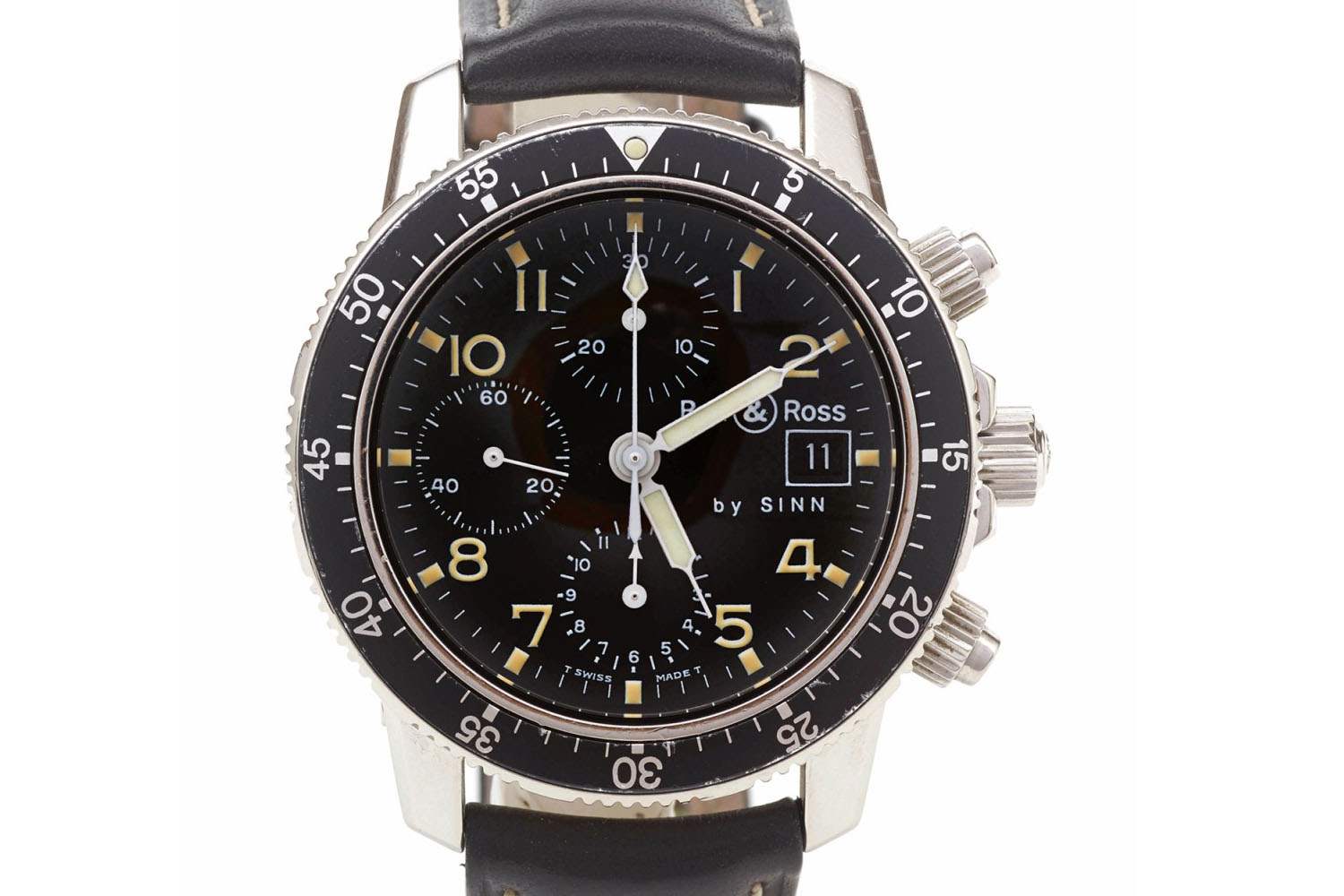
Later the brand designed its own timepieces (still manufactured by Sinn), like the Type Demineur, which was ordered for use by the bomb disposal unit of the French Security Services. This shared history went on until 2002 when Bell & Ross seized the opportunity to have its production facilities following Chanel Horlogerie’s acquisition of company shares and access to its watch production site in La Chaux-de-Fonds, Switzerland.
The real shift in the company, in terms of products, came in 2005, with the introduction of the BR 01 watch.
- 1994 – Bell & Ross Space 1
- 1996 – Bell & Ross Type Demineur (in English: Bomb Disposal Type)
- 1997 – World water-resistance record with the Hydro Challenger (11,000 meters in the Guinness Book of Records, and still a few metres deeper than the Rolex Deep Sea Challenge, which made it to 10,908 meters in 2012)
- 1998 – Bell & Ross Space 3 chronograph – Chanel Horlogerie buys a share in Bell & Ross
- 2000 – Second buy-in, Chanel increases stake, but Bell & Ross keeps more than 50% in the holding
- 2002 – End of the collaboration with Sinn and access to autonomous production at the Chanel manufacture in La Chaux-de-Fonds
- 2005 – Introduction of the BR 01 Instrument
The shift: the creation of the BR 01 Instrument
Thirteen years ago, in 2005, Bell & Ross launched a watch that would become a true cornerstone, a modern icon of watchmaking, easily recognizable amongst hundreds of other watches and a watch that laid the foundations for the decade to come: the BR 01 Instrument. The BR 01 is the brand’s declaration of independence, a solid core watch, with its own design that will be derived in multiple different editions.
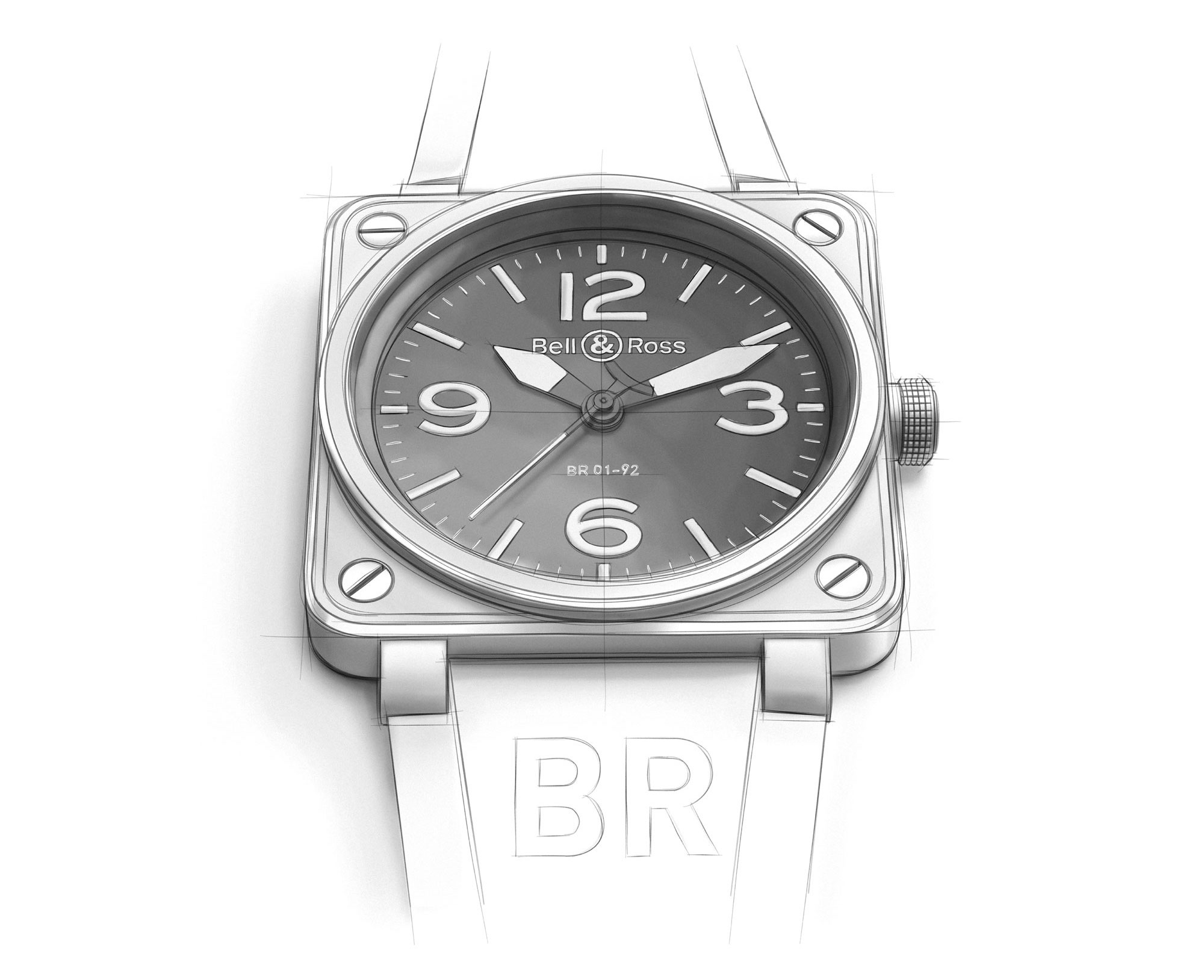
The BR 01 isn’t important for Bell & Ross. It is key! This watch immediately gave the brand international exposure and became well-known among the watch community. The main reason for the success of this watch lies in the simplicity of its design… Don’t get us wrong, simple is this context is meant in a positive way. The BR 01 is strong because it is simple, unique and easily recognizable. But also because it is permeated with military roots.
The three images above, all antique dashboard instruments found on military aeroplanes (manufactured by Wittnauer, Lemania and Wakmann, featuring 8-day movements), might already give you an idea of the inspiration behind the BR 01. What Bell & Ross did was to bring the design of these dashboard instruments to the wrist. As simple as that.
The concept was based on a round dial within a square case. Most of these military instruments share a no-nonsense design, based on functionality. In order to be easily inserted in a dashboard, they were mostly square-shaped with 4 functional screws (one in each corner) and with a round dial in the centre. Black was the standard colour, again for functional reasons – avoiding reflections in the cockpit and offering a great contrast with the radium/tritium indexes and hands.
Using this same recipe, Bell & Ross launched the BR 01 in a steel or a black case, with an extremely sleek dial but with intense contrast. Functional, basic, but very, very powerful in terms of brand identity.
Modern examples: Horoblack & Nightlum
Since the creation of the BR 01 and the new face of Bell & Ross (or at least Bell & Ross as we know it today), the brand has been very active – and creative. Military watches aren’t the only focus anymore and the round-within-a-square is not the only design seen in the collection. Since then, the brand has forged links with the diving world, with Formula 1 or with sports cars/custom motorbikes. Those evolutions were a necessity, in order to grow. However, the core collection, the military-inspired watches, are still – thankfully! – present at Bell & Ross.
However, even the core collection has changed over the years. The BR 01, with its 45mm x 45mm case, was certainly a perfect statement to start with. Yet, it has now almost disappeared from the collection and has been progressively replaced by its little brother, the BR 03 – a watch of similar design but that has made concessions to daily wearability: a 42mm x 42mm case, a date window and the use of slightly more luxurious details on the case and dial. At least, the models we have today are very much in line with the original no-nonsense, utilitarian design of 2005.
The concept behind Bell & Ross has evolved but the roots haven’t been forgotten. The two watches – BR 03-92 Horoblack & Nightlum – we have to illustrate this article aren’t the latest additions to the collection but they perfectly sum up what the core of the brand is, what Bell & Ross stands for. No frills, just a cool-looking, super-legible, robust tool watch made to live inside an aeroplane cockpit (or anywhere else you think it looks good). And don’t think these watches are just design gimmicks. Bell & Ross still provide timepieces like these to various special forces around Europe (including the GIGN and RAID, French police tactical units).
The BR 03-92 Horoblack & Nightlum are back-to-basics watches, completely in line with the original BR 01 concept, both in terms of design and (absence) of finishing. Both watches are rough, undecorated and void of useless functions – except the date, but we’re not going to start an endless date/no-date debate. For the rest, they have been created with one only goal in mind: being legible in daylight or at night.
For this reason, both cases are matte – to avoid reflections. The BR 03-92 Nightlum features a bead-blasted black ceramic case with a matching matte black dial. The BR 03-92 Horoblack is its opposite, with a bead-blasted stainless steel case and a matching steel-coloured dial. Both eliminate the polished or brushed surfaces seen on some recent versions of the BR 03 to focus exclusively on the matte surface. Yet, the result remains pleasant and consistent with the spirit of the watch.
The dials also express this concept of functionality and perfect legibility, with highly-contrasted numerals and hands. As you can see, even though Bell & Ross gives the design a modern touch, the hands and indexes are inspired by vintage dashboard instruments. The Nightlum version, with a black case/dial and those bright green indexes and hands, is the most coherent with the concept and offers a great contrast during the day and emits intense lume at night.
The Horoblack, thanks to its black indexes and hands, is also perfectly legible in daylight conditions and even benefits from fewer reflections on the dial. As the hands and numerals are painted with black luminescence, the night-time legibility is less effective – but still sufficient for most conditions.
Powering these watches are simple automatic movements from Sellita (SW-200, clones of ETA movements). These movements are, in our opinion, the best option for such watches. Robust, reliable and easily serviceable, they will do the job on a daily basis and won’t cause issues. Complex movements, with decorated bridges and complications, wouldn’t suit the military concept.
To conclude, these two watches represent the DNA of the brand perfectly. Certainly, Bell & Ross had to evolve and to offer new designs, new inspirations and to look at complex watches too. However, the basics of the brand are still here and the BR 03-92 Horoblack & Nightlum are solid examples of this military background.
The BR 03-92 Horoblack is priced at EUR 2,990 and the BR 03-92 Nightlum at EUR 3,400. Both watches are available at selected retailers and on the brand’s website.

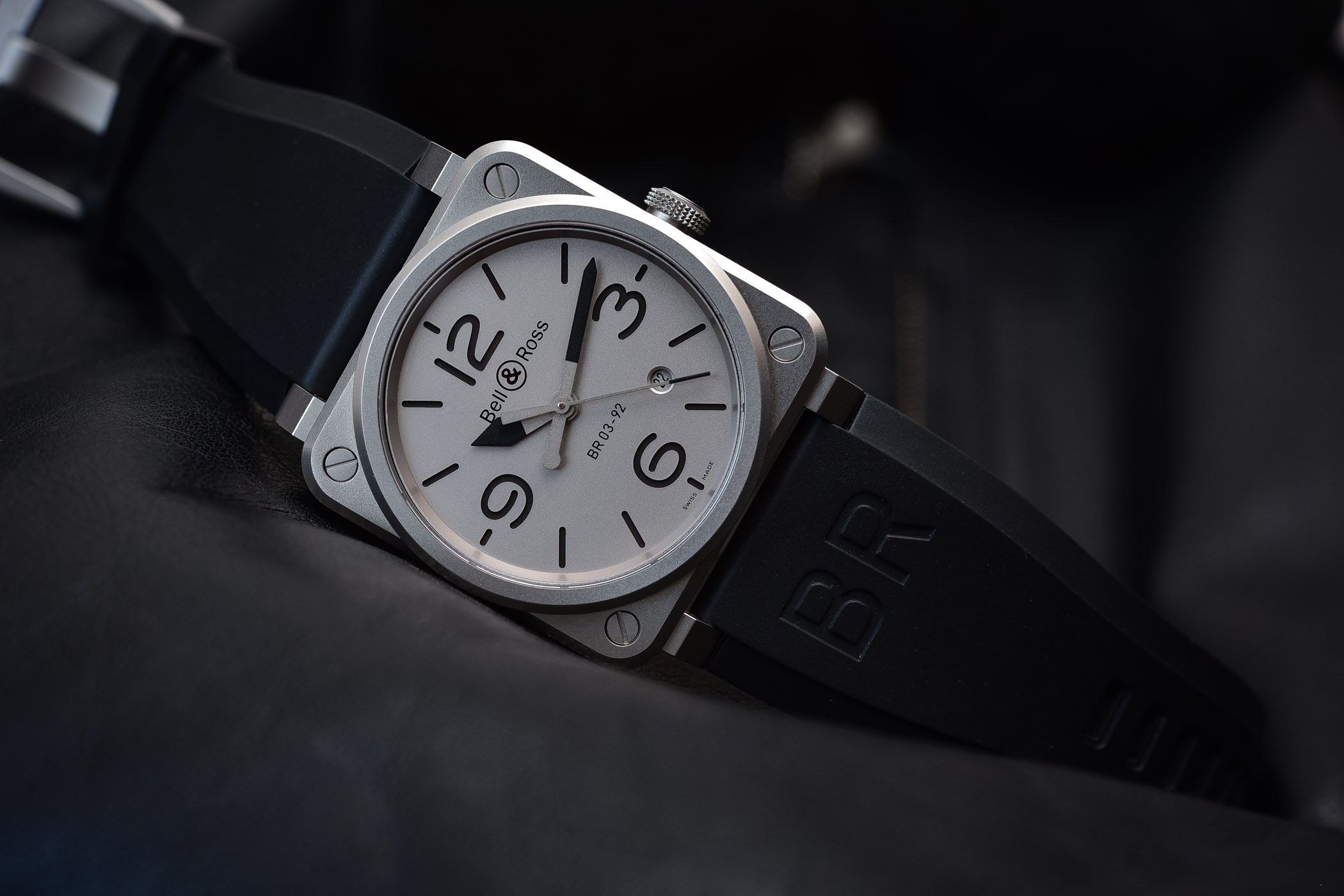
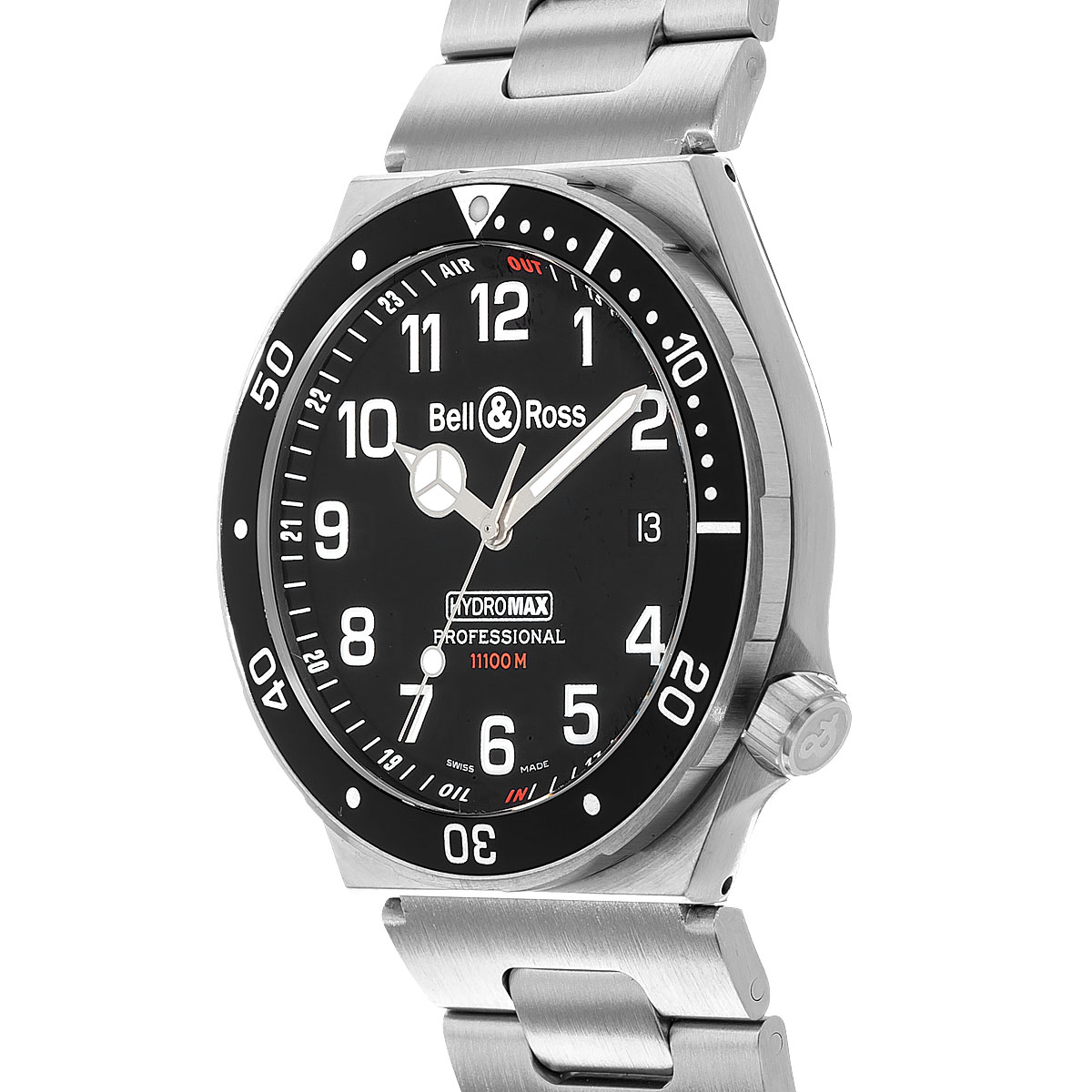
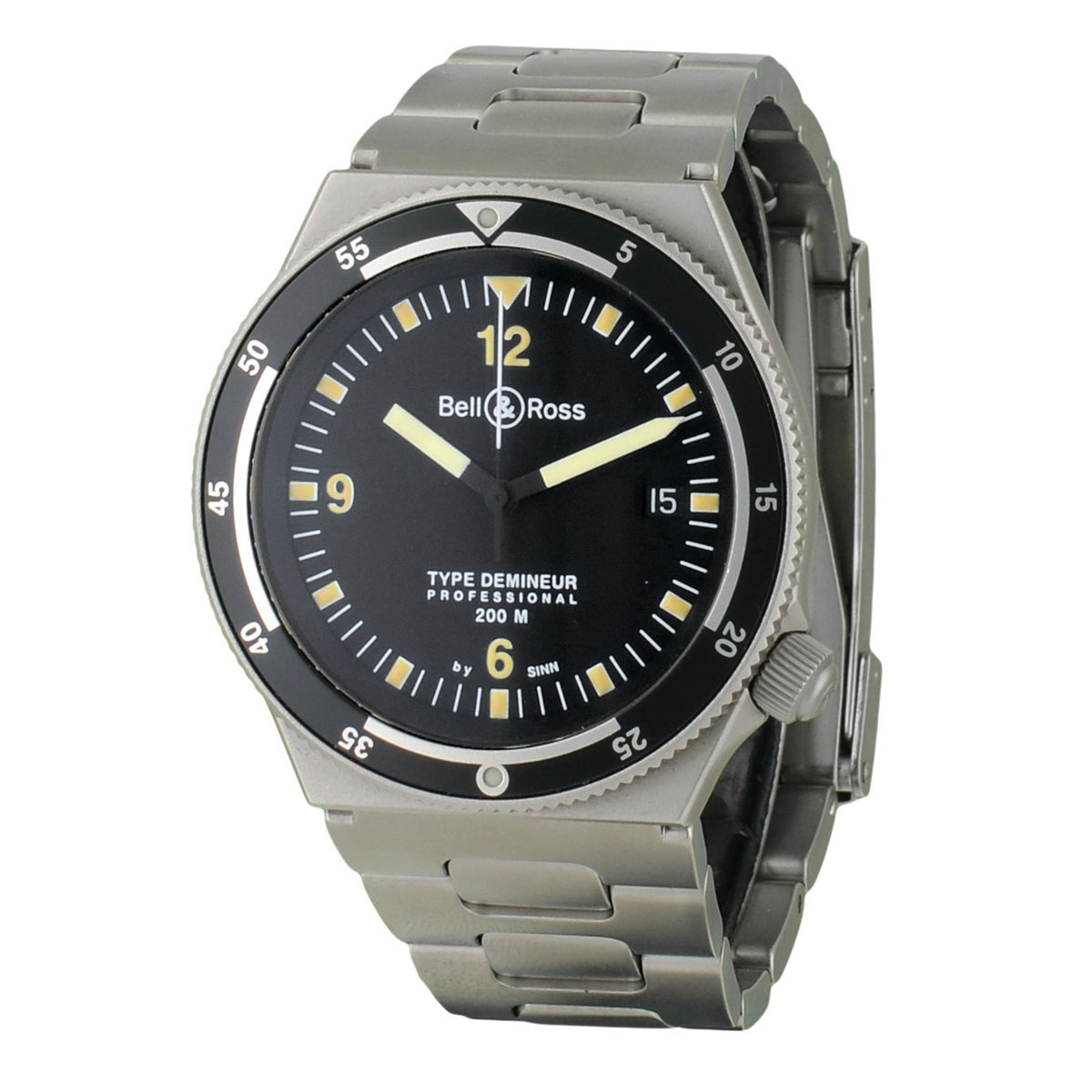
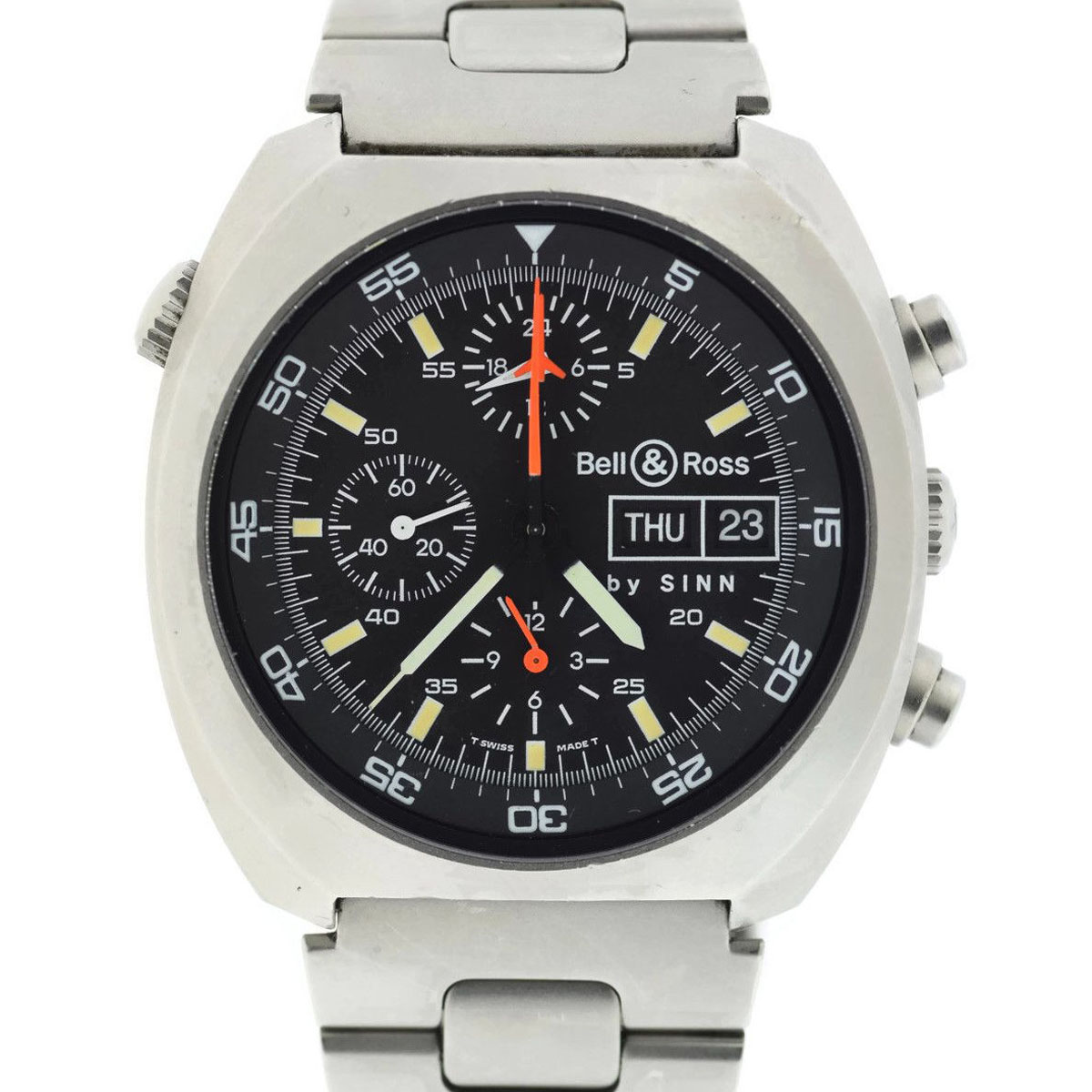
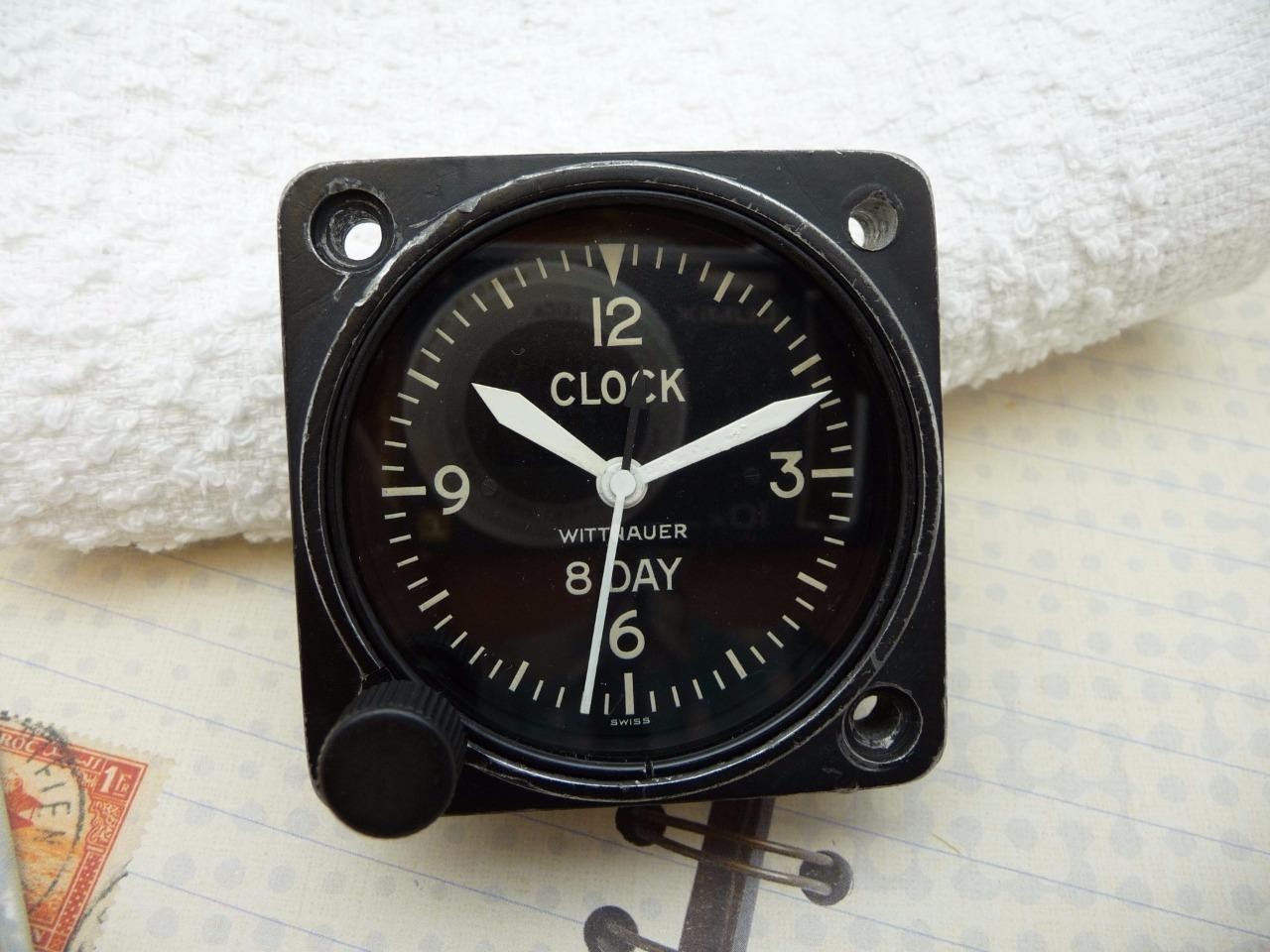
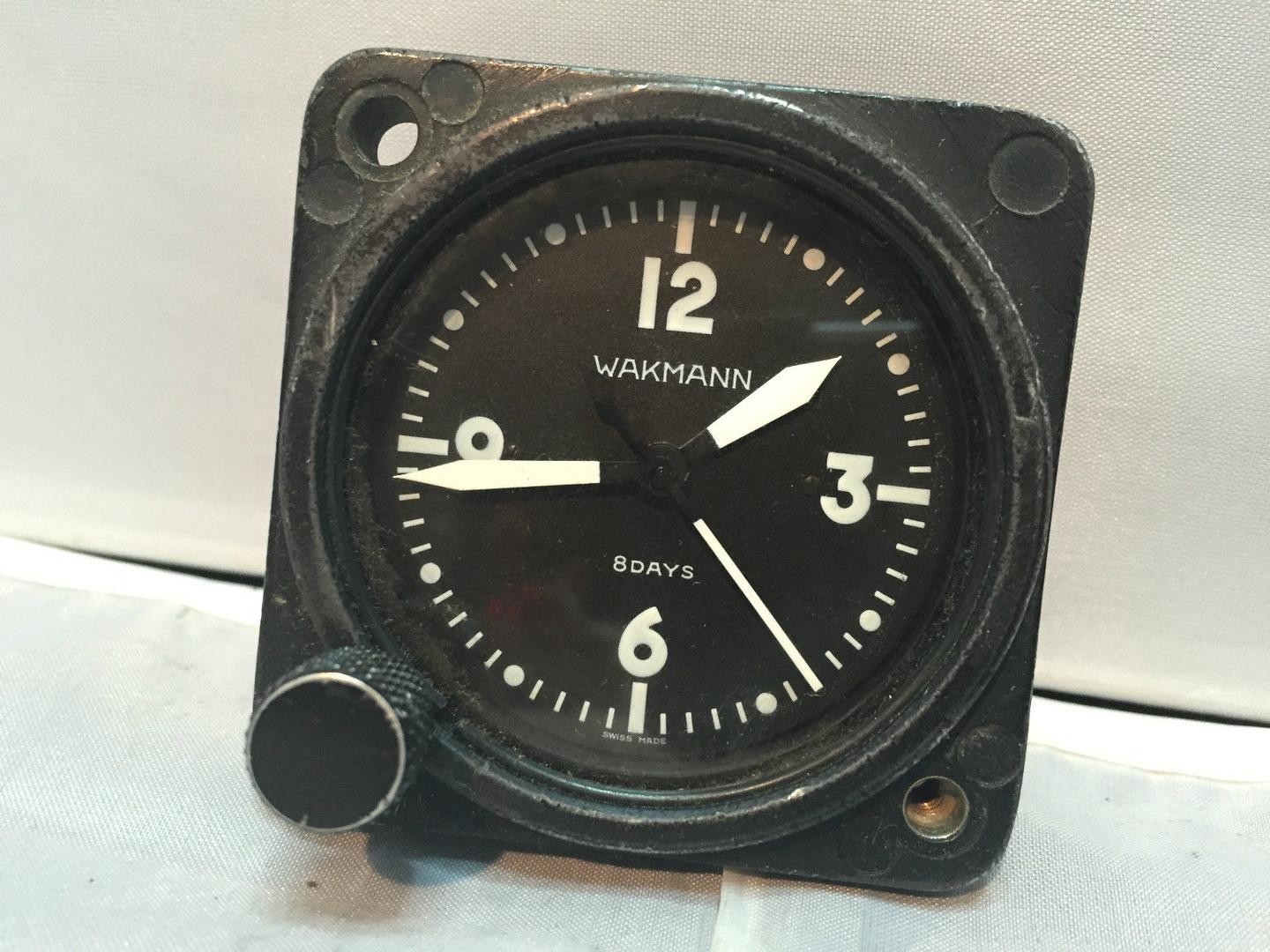
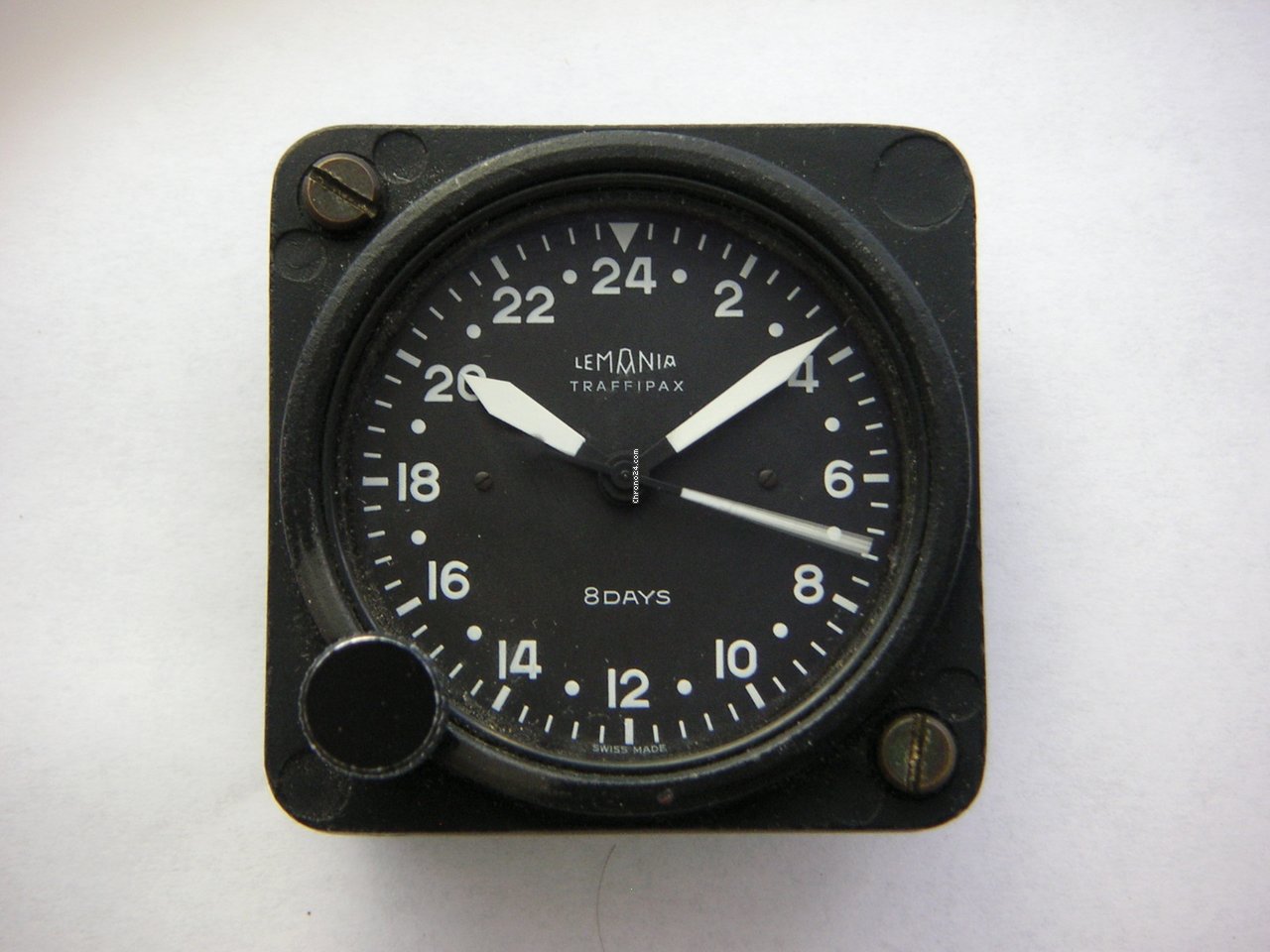
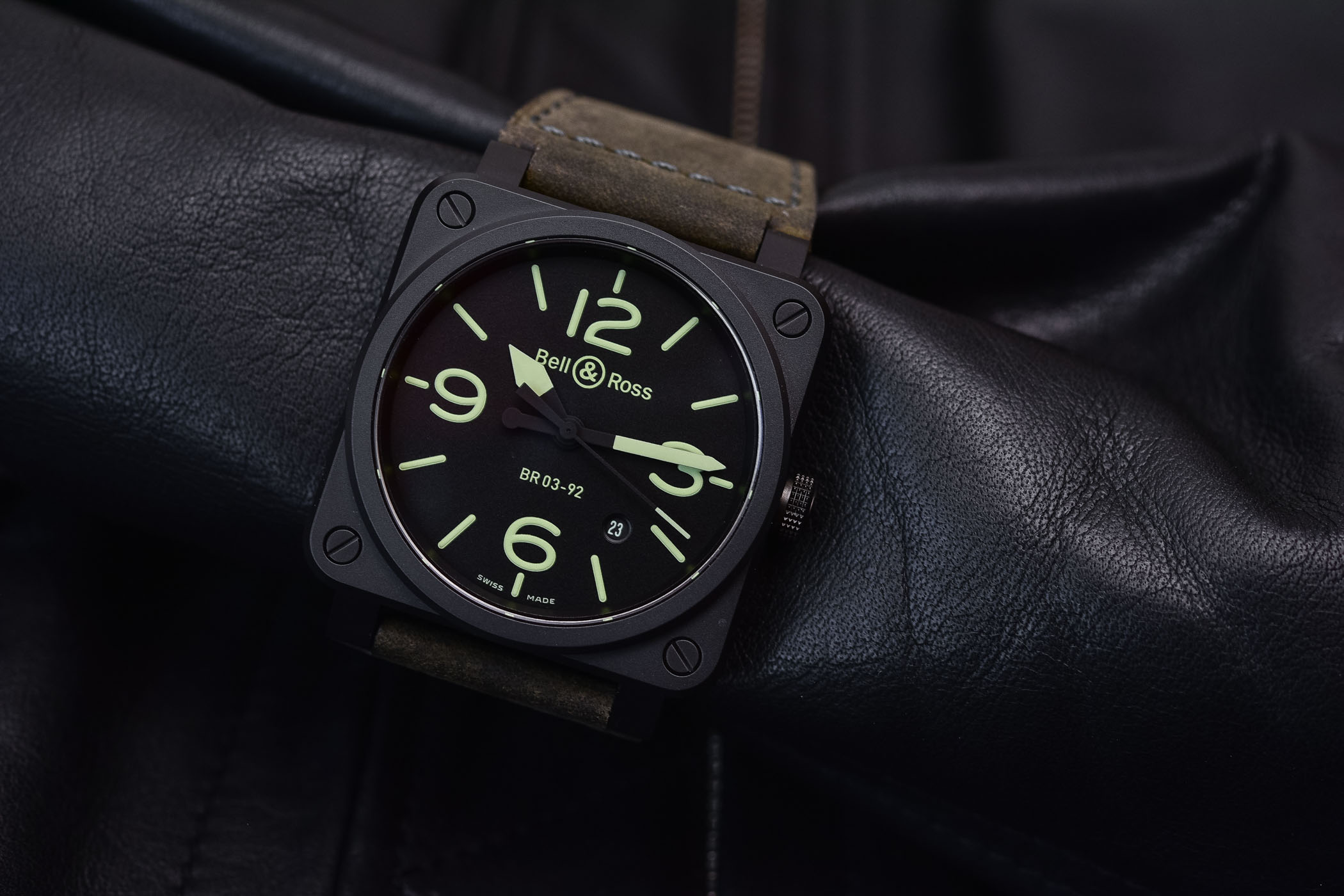
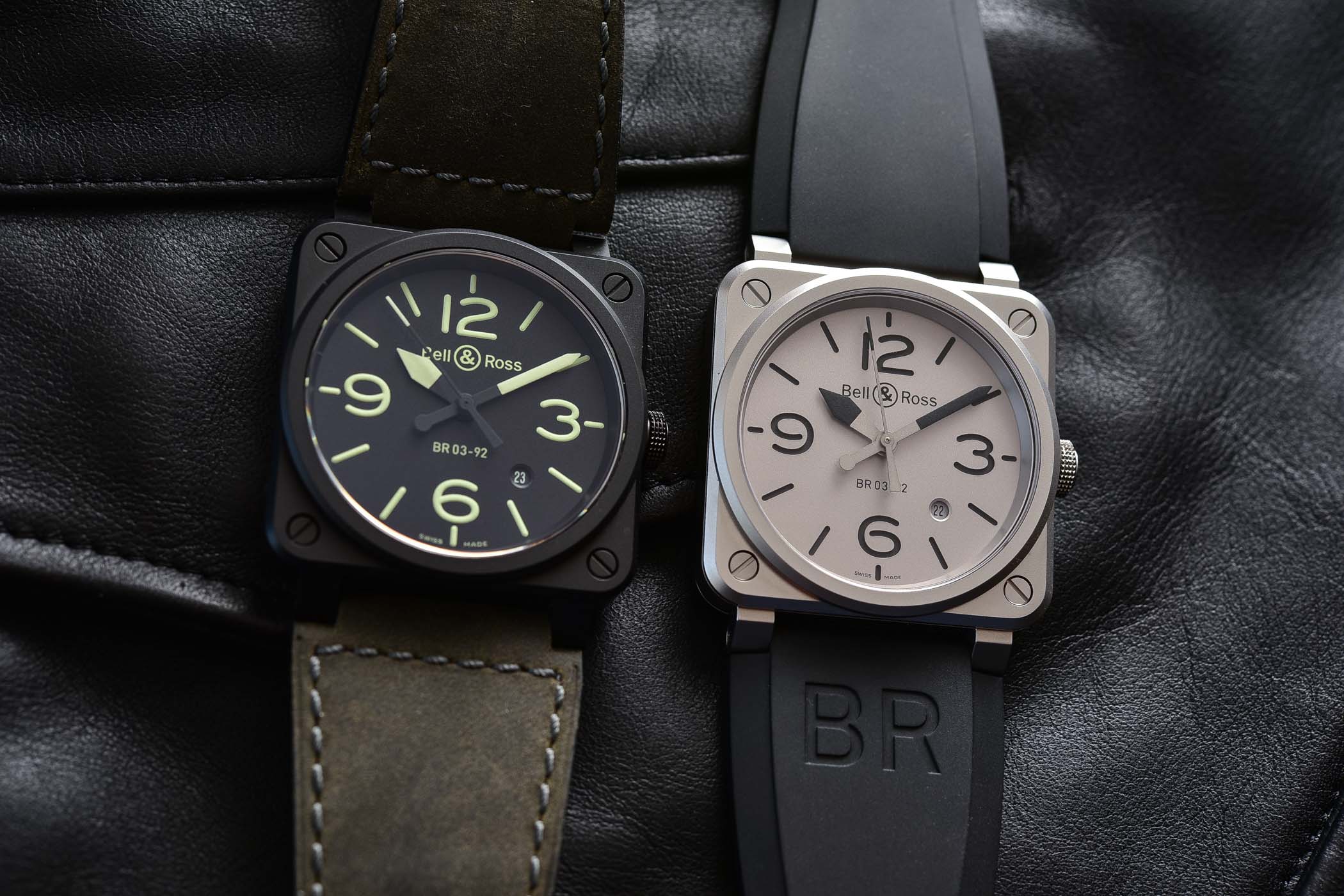
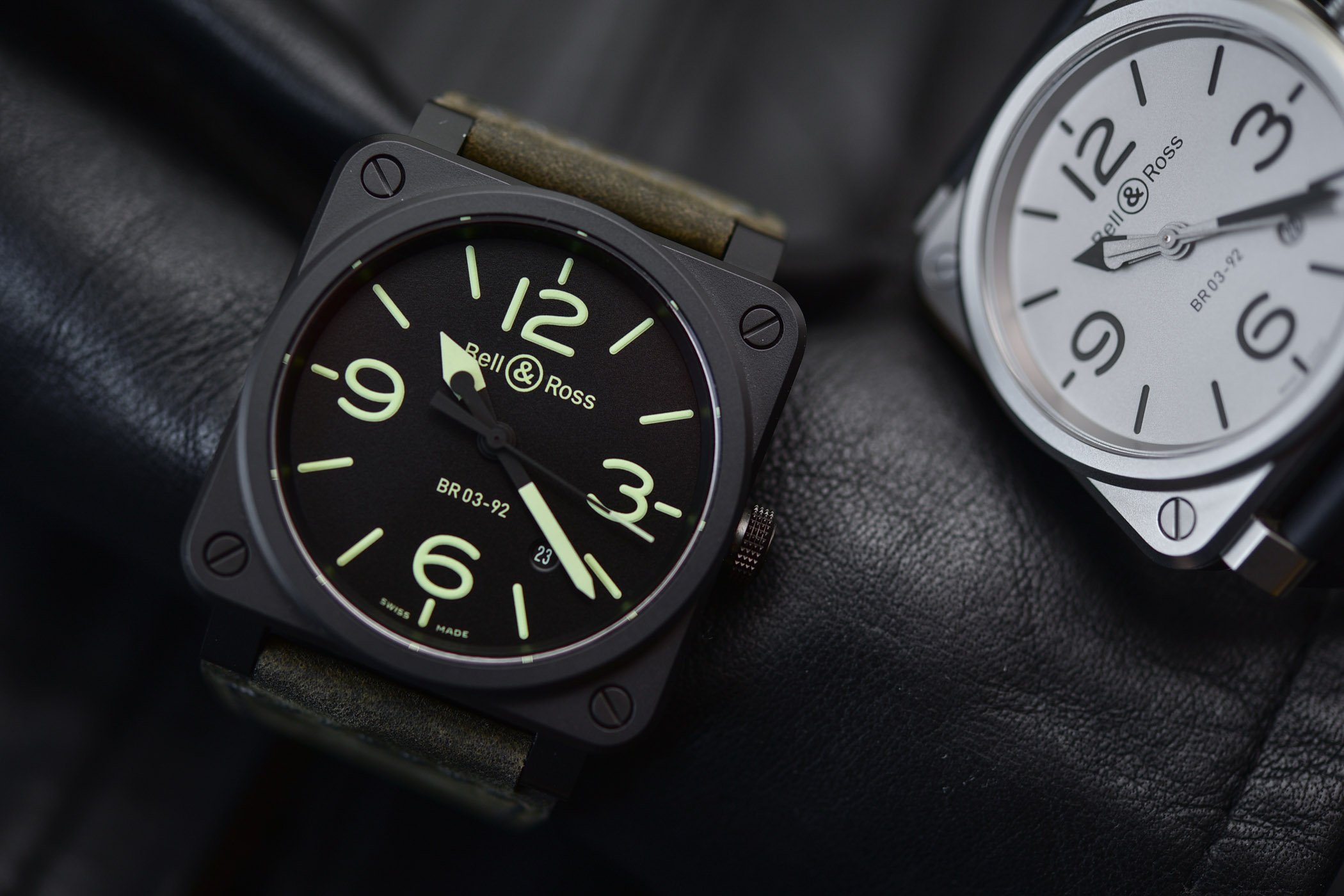
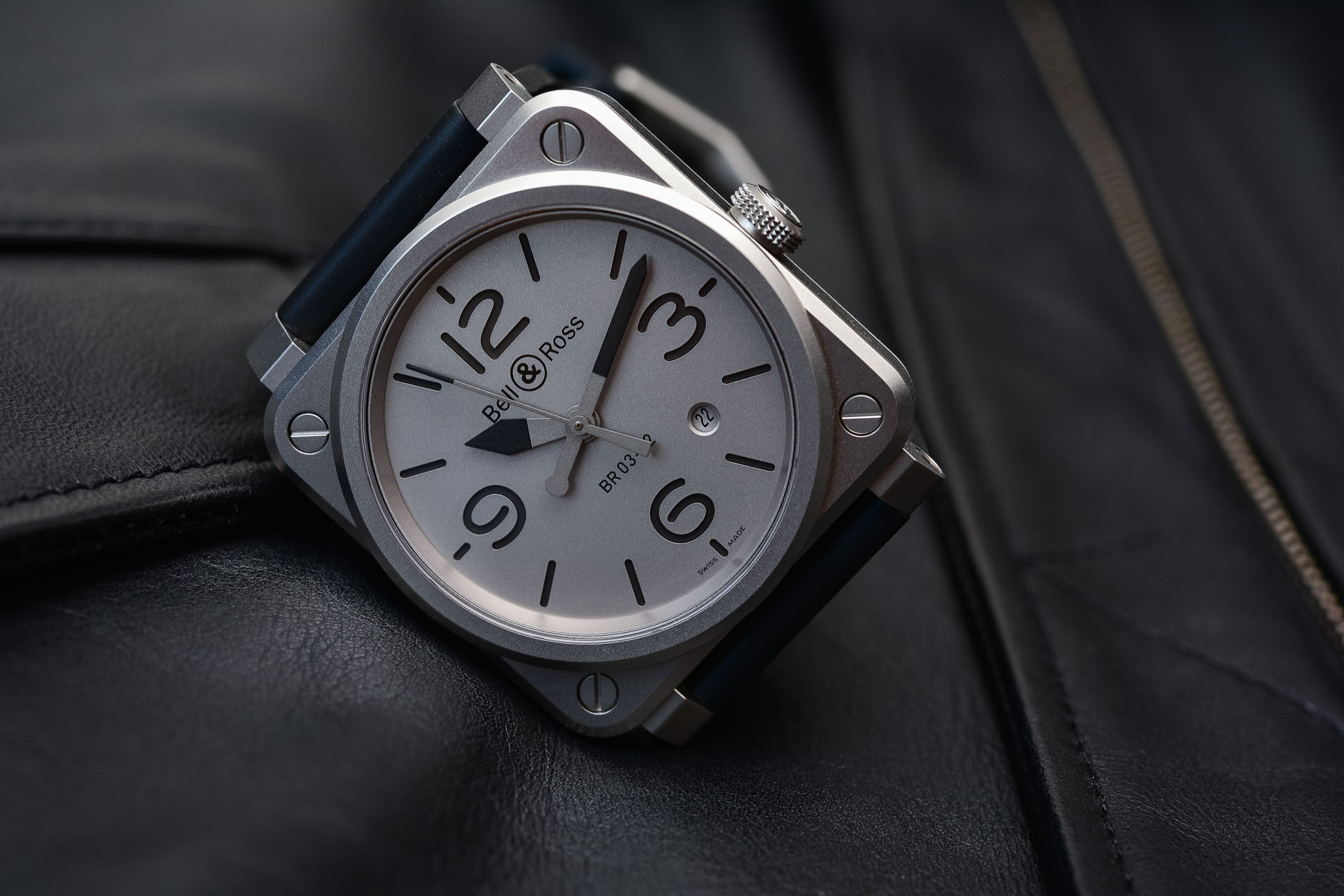
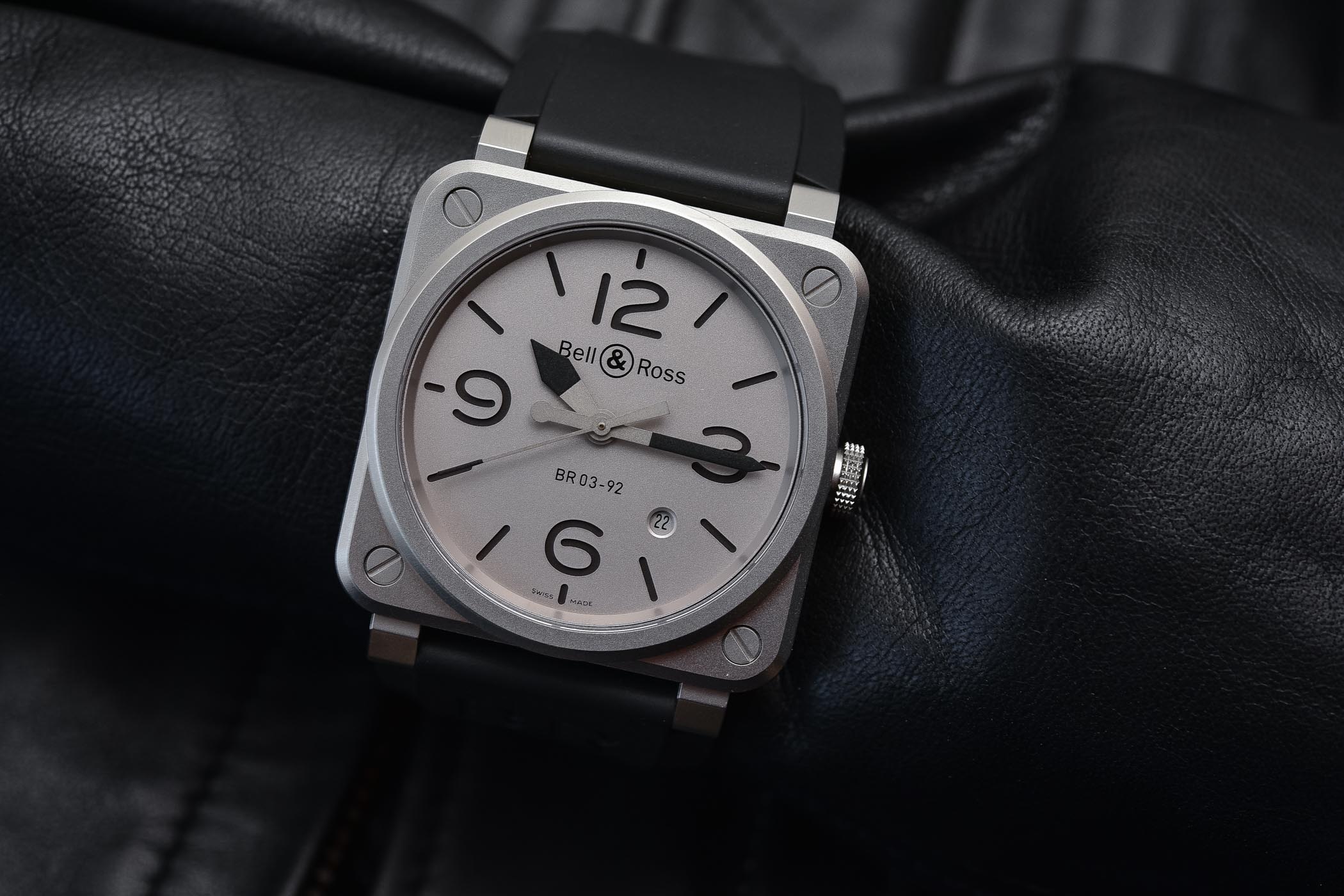
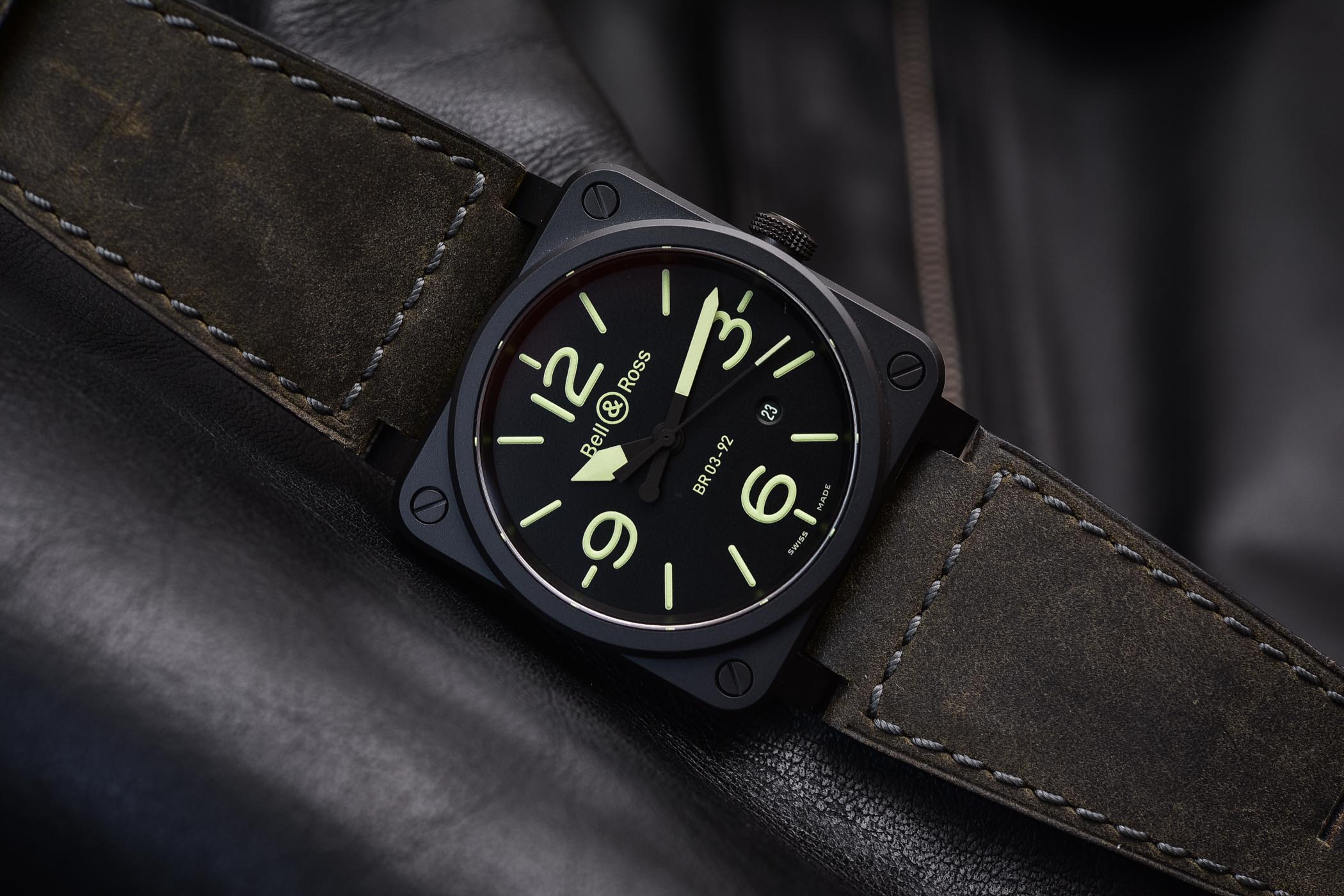
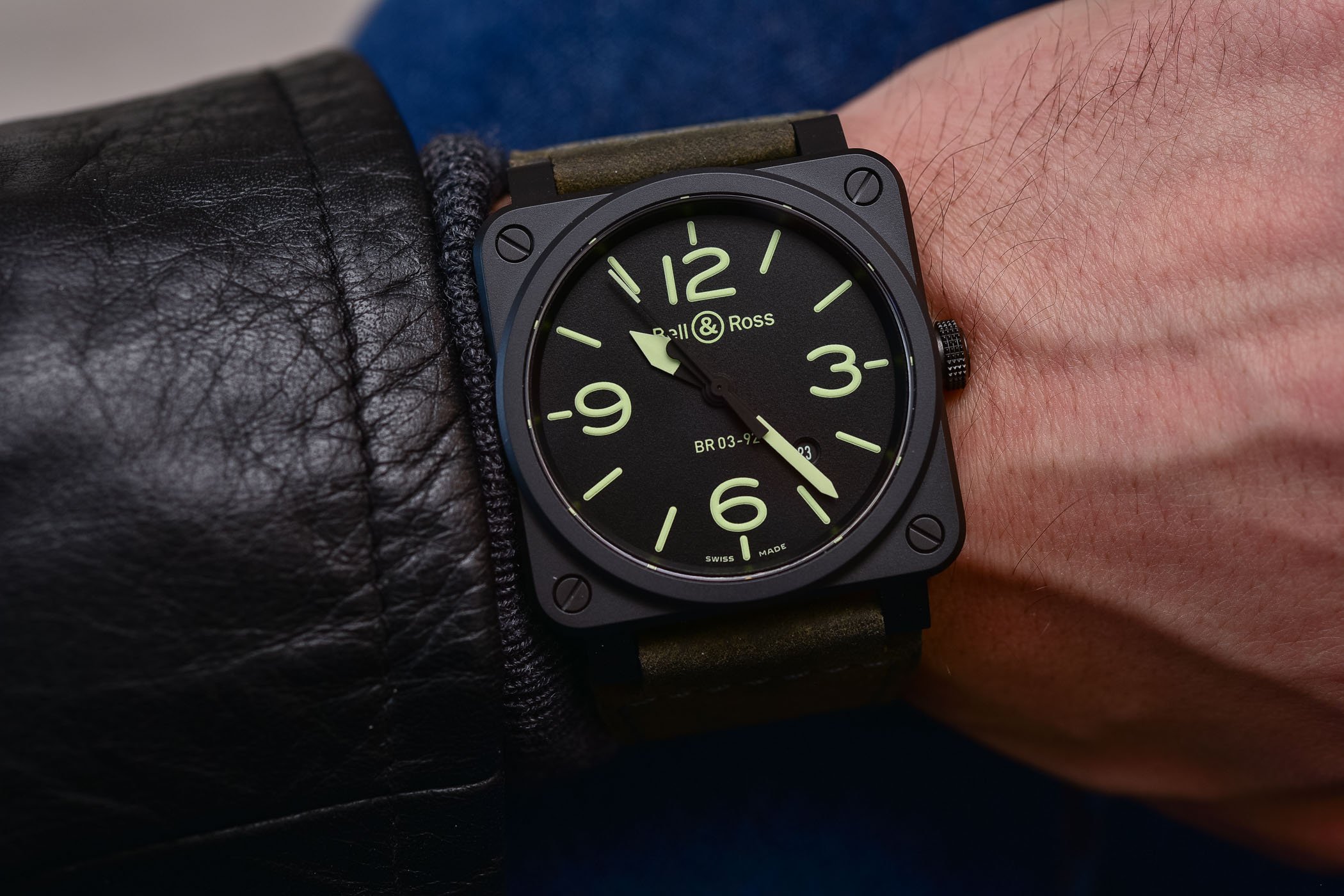
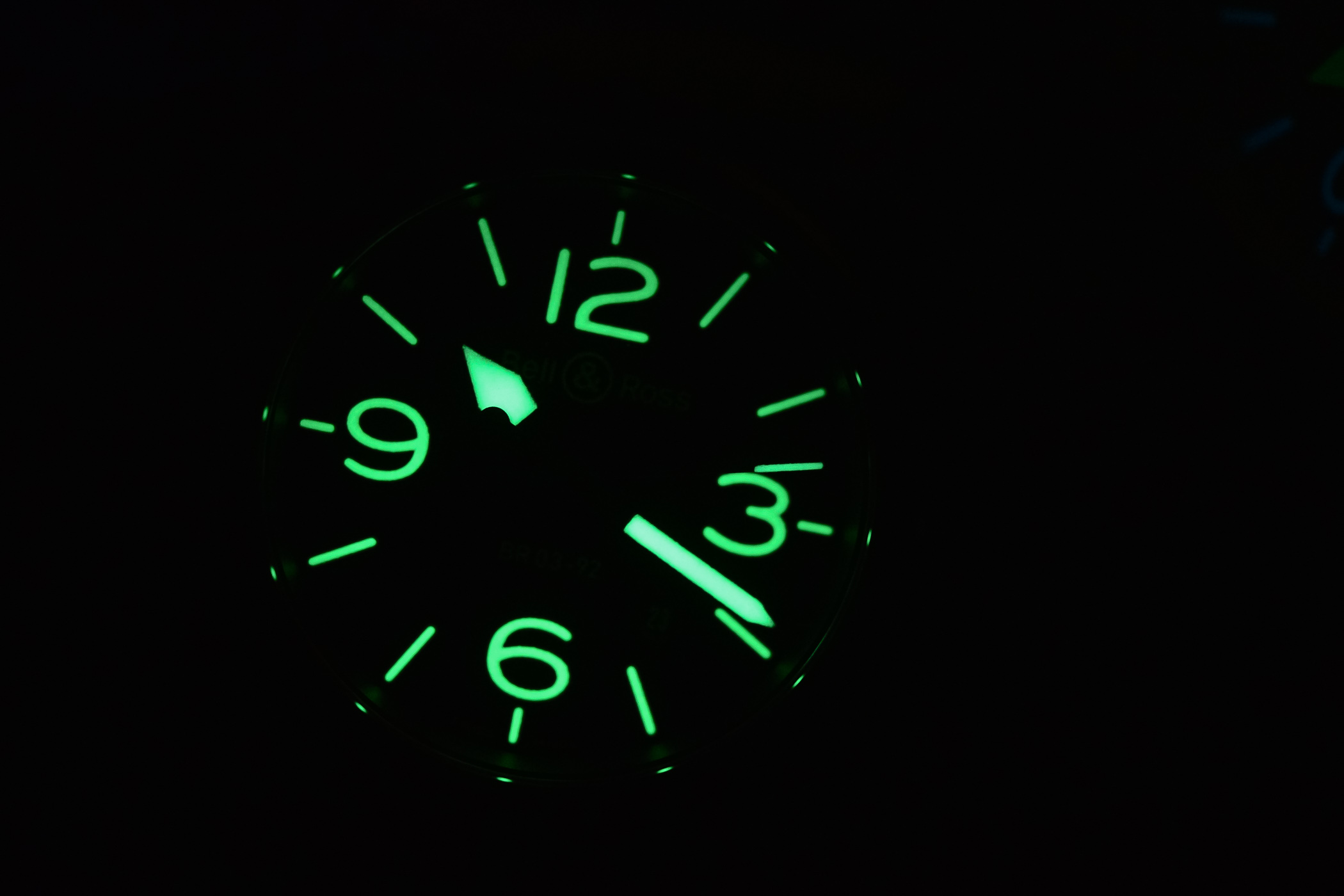
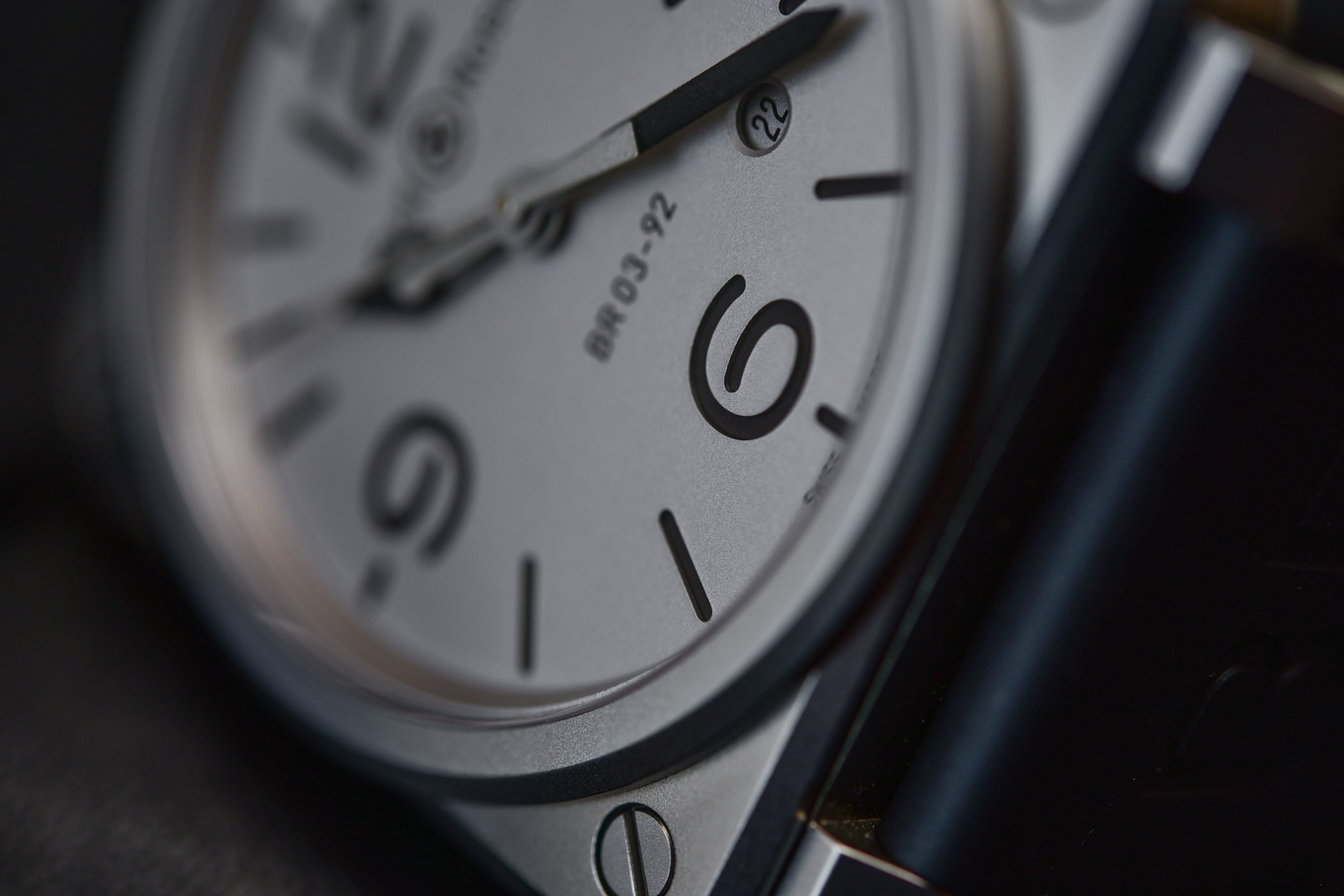
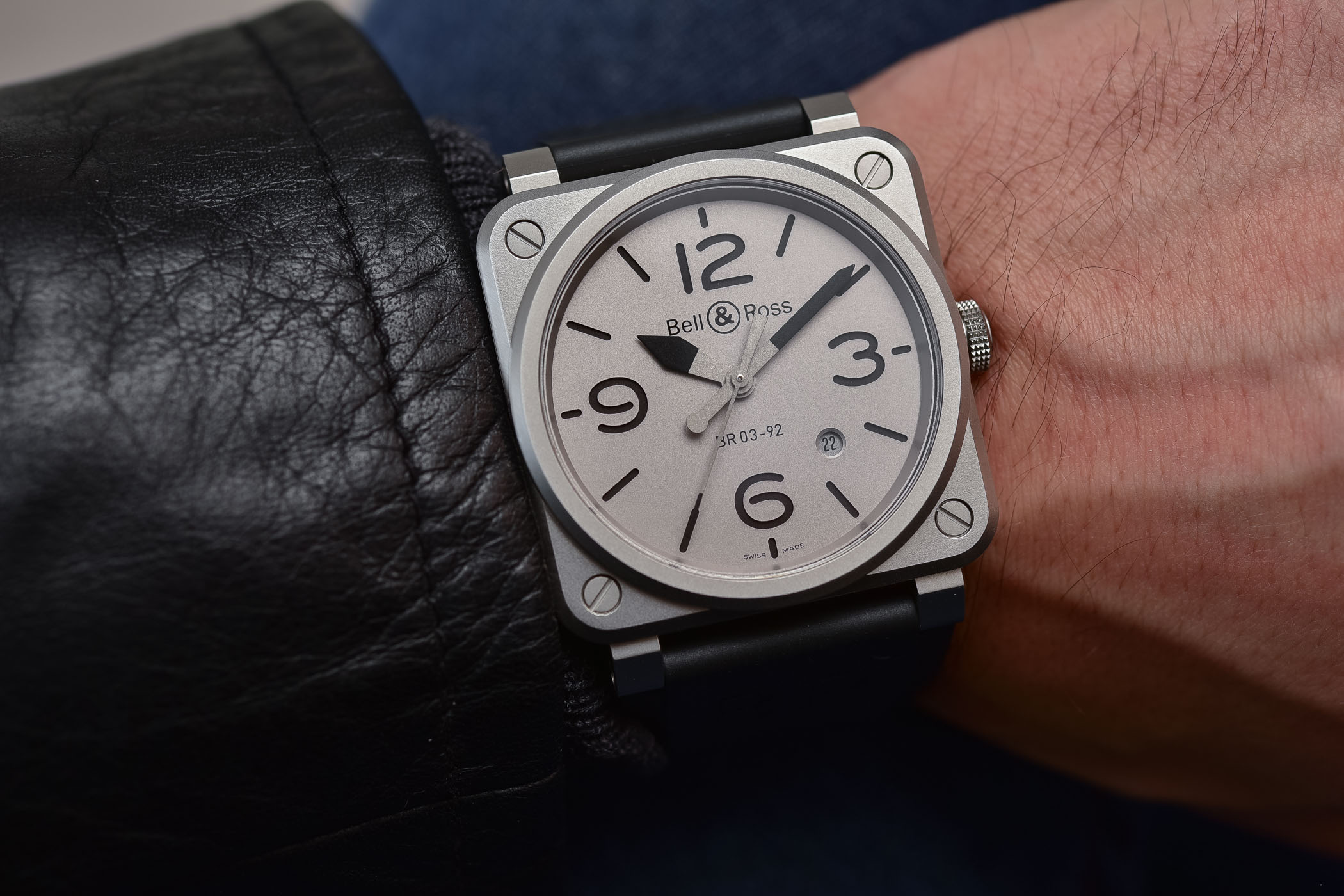
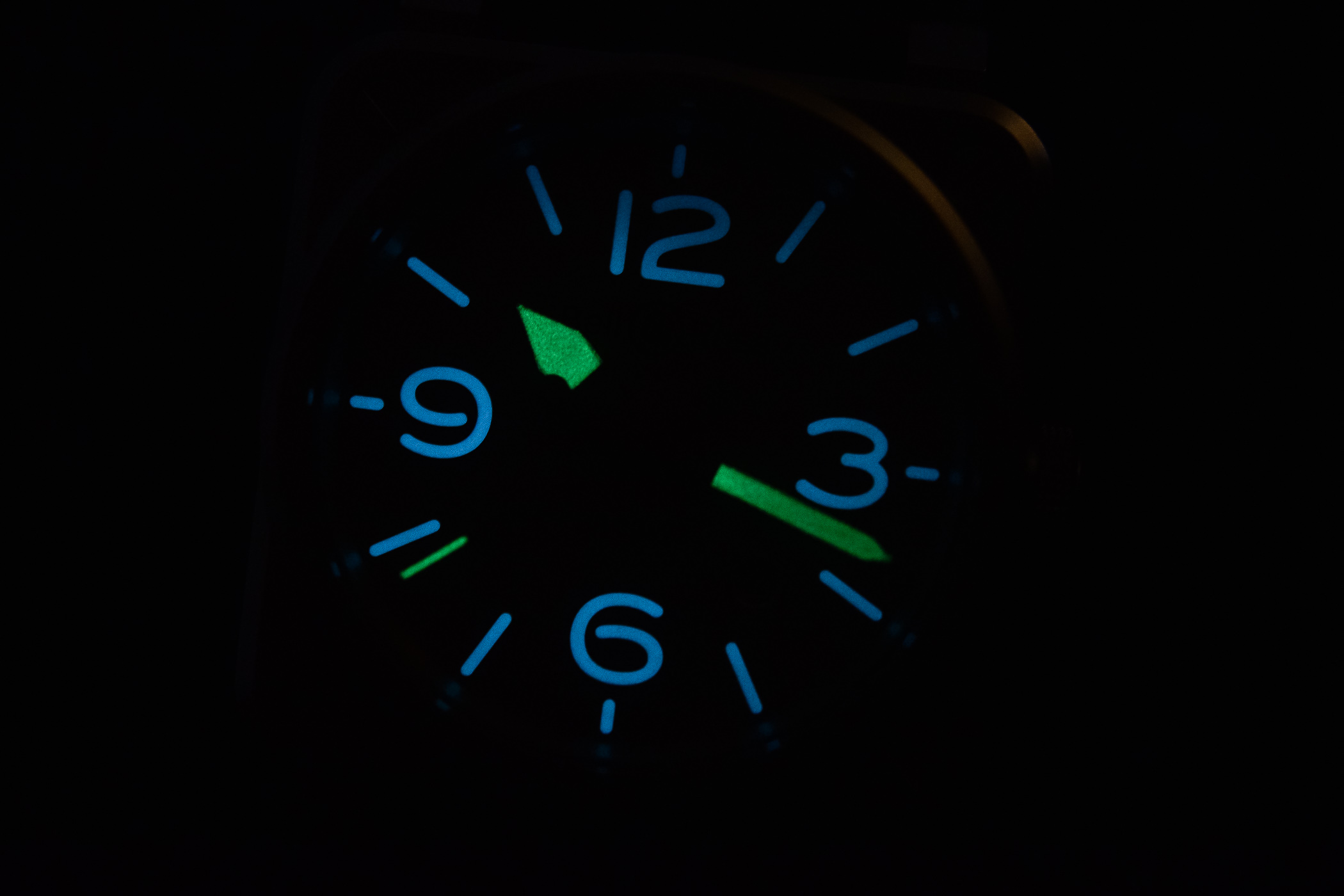
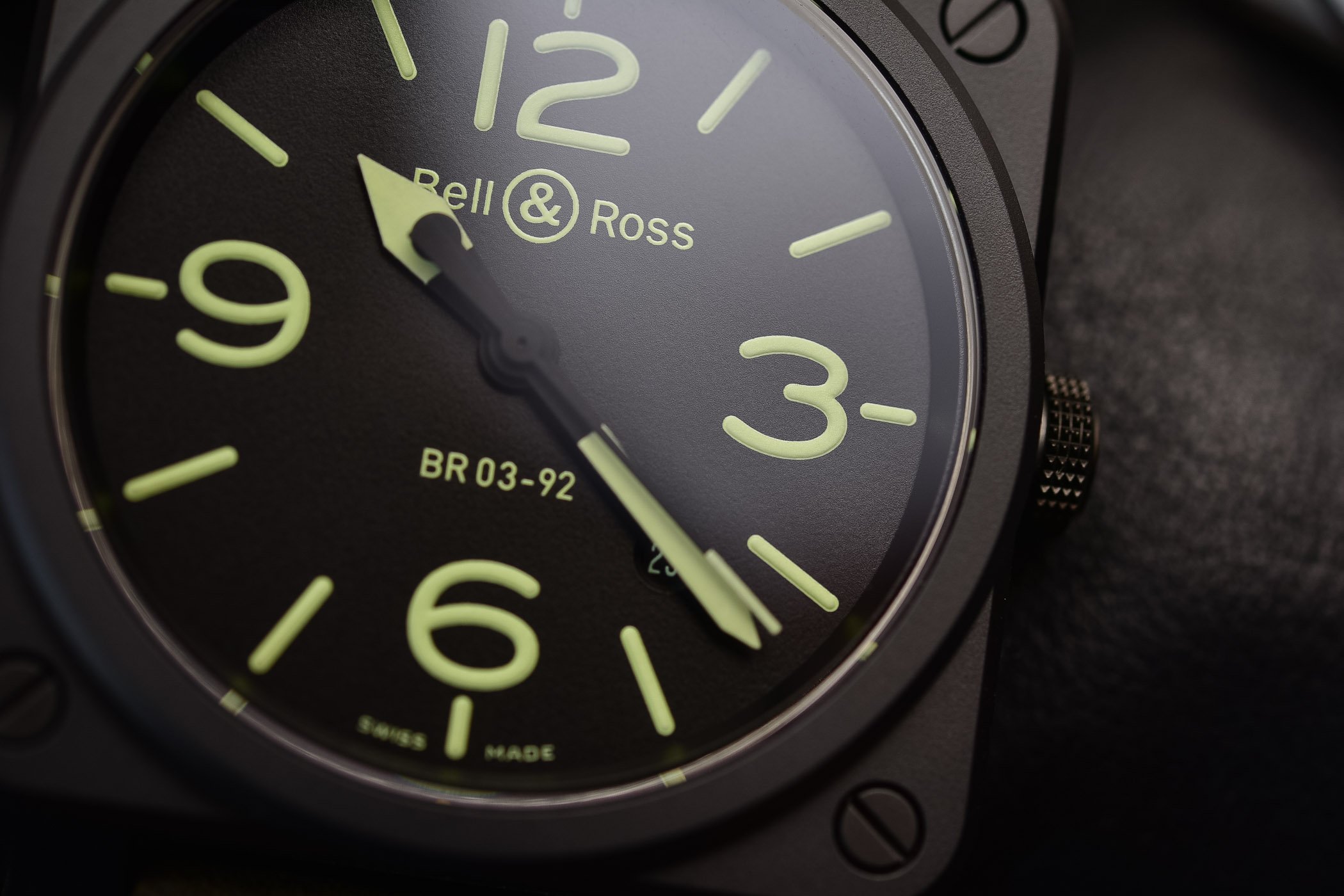
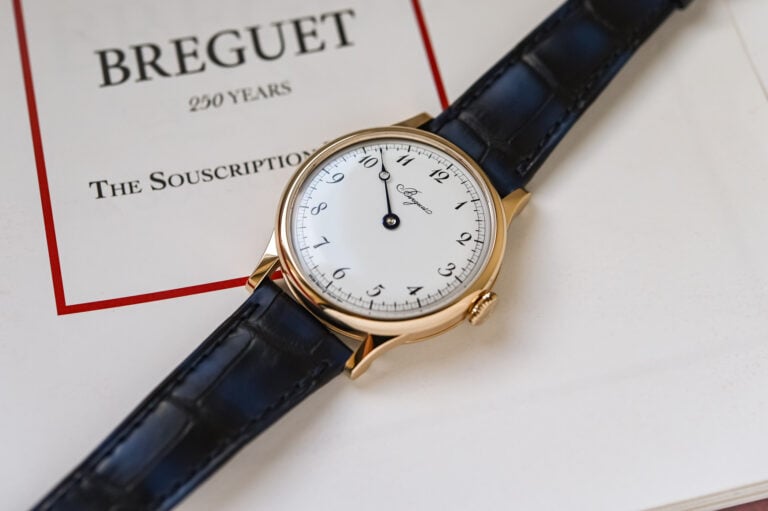
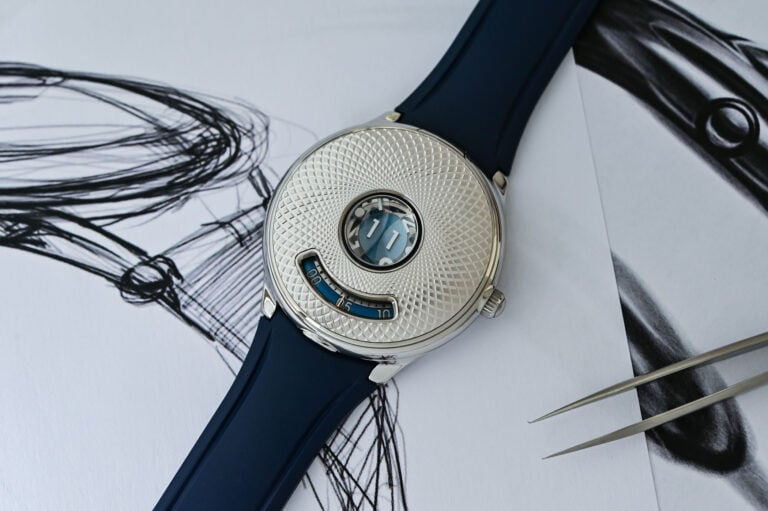
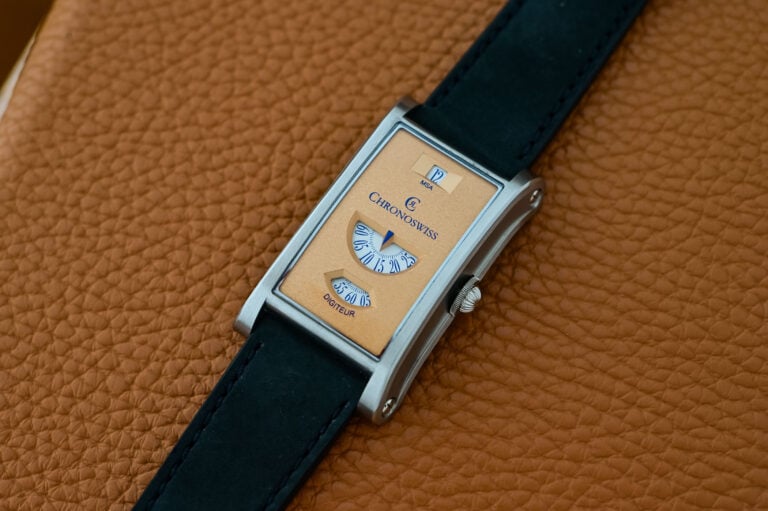
14 responses
I’ve always liked their design, but the watches are huge. Even the two reviewed, at 42 x 42, are too large for most wrists. Look at that wrist shot! In my opinion they could be smaller yet & still maintain their aesthetic.
@Monochrome Crew
Are the BR calibres used here really stock Selitta movements that my regular ETA/Valjoux-seasoned watch guy can service, or does Bell & Ross include some proprietary mods that force you to send it back to them? No snark intended. Genuinely curious. I’ve always been intrigued by the brand – any company that the old-fart WIS guys like to diss is usually doing something right – but never really bothered researching further.
Agreed with Joel, their 2 models BR 01 & BR 03 are too big for most wrists. They designed a smaller version called BR S with 39mm dial and they are just perfectly sized. Only “inconvenient”, most of them are quartz movement (as the watch is very thin they couldn’t put an automatic movement in it). I own one of them and it’s very readable and enjoyable !
@matti
As far as we know, Bell & Ross uses non-modified Sellita or ETA movements – so it should be possible for a good watchmaker to service it, without problem.
This article is an advertisement. Another fawning piece which ignores the fact that these watches seem very overpriced. The Sellita wasn’t chosen because “it is the perfect choice to strengthen the military concept.” It was chosen because it is cheap.
Get it right.
p.s. I genuinely do like B&R designs but for me they are definitely in Tag Territory. All mouth and no trousers.
@Just Another Guy on the Web – Even morons are entitled to their opinion.
I just bought a Horoblack and it’s a beautiful watch and nicely made. Yes the movement is “run of the mill,” but that’s not really the reason you buy a B & R. And B & R is a little more exclusive, it isn’t sold in department stores, like TAG. Beauty is in the eye of the beholder and all fine watches are overpriced, that’s part of the reason not everybody has one.
Buy a watch that you like and can afford (whatever the $), enjoy it and don’t poo poo other peoples choices.
Appears people with FP as their first two initials are attracted to the Horoblack. I also purchased one and am very satisfied with the product. I did change out the straps for a titanium shark mesh band which I prefer over either of the two straps supplied by B&R. I want at least one watch that I can read the time clearly on without needing reading classes. The Horoblack works for that simple need. Everything else is gravy.
I was not sold on Bell & Ross by looking at photos but one day I decided to make the plunge. I’ve never been happier with a watch purchase. The watch looks great, keeps accurate time and is very visible at almost all angles.
I have to say that the quality of the first Bell & Ross watches was much better than the last, I own a space 3 Ti made buy Sinn, this watch never loses or gains a second, the BR03 I own is gaining 1-2 minutes per day, that is annoying, its a beautiful watch and i live the design but its not reliable… the cheap movement was most probably not the best approach …
I’ve always loved the simple, functional look of B&R watches, and a year ago I purchased a BR-S as my everyday watch. I wear it for thousands of rough miles on a bicycle, hours and hours of playing drums, doing yardwork, during gym workouts, and I have NO issues or complaints. The crystal hasn’t a single blemish, the rubber band is comfortable, the ceramic case is light, it’s easy to read, and I am stunned that it hasn’t gained or lost one second in a year. Is there a reason for that, or am I just lucky?
So, B & R use a 3rd party to assemble 3rd party movements? What do they actually do then? Just design the watches? Kind of like Calvin Klein, Hugo Boss, etc?
I bought my BR01-94 automatic in Tachilek , Myanmar , in 2010 . It is beautifully constructed , indistinguishable from the pukka timepiece ,and whilst I don’t wear it daily , on the days on which I do choose to wear it , it performs impeccably , and no one has ever questioned its authenticity ….not even the B&R agent in Penang from whom I recently bought a replacement embossed leather strap . A tour de force …or a tour de faux ?
I purchased my 46 mm BR01-94 in Tachilek, Myanmar ,in 2010: it is beautifully crafted and indistinguishable fro the pukka product in weight, external quality and appearance : of course it is not the customary offering to be found for 50 dollars at Thai night markets, and even staff at the B&R service centre in Penang who provided me with a replacement buff coloured embossed leather strap a couple of years ago did not pick up on its questionable pedigree . ….a tour de force ..or a tour de faux